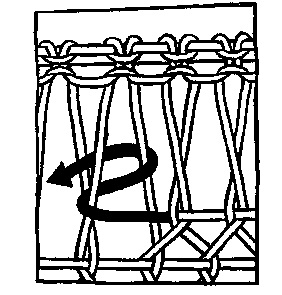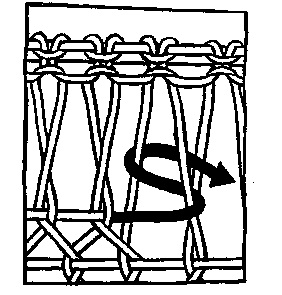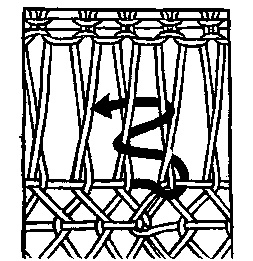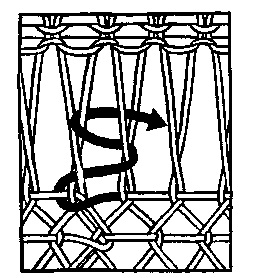- Where to Buy Drums in the Greater Toronto Area
- Tips on Purchasing a Drum
- Drum Maintenance & Tuning
- Pulling Diamonds (The Mali Weave drumhead tightening system)
Where to Buy Drums in the Greater Toronto Area
African Drums and Arts Crafts
618 Dundas Street West
Toronto ON M5T 1H7
(416) 597-0175
Owner: Seikou (mention I sent you – we’re friends, and he might give you a better deal). Seiko can also repair drums and replace broken drum skins at a reasonable price.
Cosmo Music – The Musical Instrument Superstore! (Just North of Toronto)
10 Via Renzo Dr
Richmond Hill ON L4S 0B6
+1 (800) 463-3000
Long & McQuade (they have various locations)
925 Bloor St. West (Just West of Ossington)
Toronto ON
(416) 588-7886
Their drum department is in the basement.
Shaw Percussion (home of Orion Drums)
5258 Old Homestead Rd.
Sutton West ON L0E 1R0
+1 (905) 722-5449
Owners: Phil & Wendy Shaw (also good friends – mention I sent you)
A master drum maker and djembe importer, who has one of the best drum stores in Ontario (North of Newmarket). Phil can also repair drums and replace broken drum skins at a reasonable price.
Sound Benefits (formerly Rhythm Kingdom)
(416) 854-7228 (Ask for Rufus)
Not only am I a drum circle and HealthRHYTHMS facilitator, I also purchase drums for schools, organizations and individuals, through my extensive network of drum manufacturers, importers and distributors. I also manufacture and import a variety of shaker instruments, especially Kashakas (kashaka.com), the worlds most versatile shaker instrument. I have worked in the percussion industry for over a decade, which has led to many new friends and contacts in the business, and has afforded me significant discounts which I can pass on to you.
Soul Drums
1875 Leslie St Unit #10,
North York, ON M3B 2M5
(416) 225-5295
Owners: Doug (Sole) & Paul (also good friends – remember to mention I recommended their store)
Steve’s Music
415 Queen St West
Toronto, ON M5V 2A5
(416)593-8888
Their drum department is on the second floor.
Tips on Purchasing a Drum
They say you shouldn’t pick out a drum based on price, looks or where it was made. This is the advice I give to people who ask:
- Try out a lot of drums. Pick them up, hold them in your hands, and play them. They say your drum will pick you. You will play one and it will say “Pick me!”, and it will just sound better than the rest. This is the drum for you.
- Synthetic vs. Goat Skins. I respect that some people do not like to touch an animal’s skin. Some people who make African hand drums believe the spirit of the goat gets to live on as a drum, and the spirit of the tree gets to live on as well. Because of this, drums should always be treated with respect: they should only be played with hands, and never used a table for writing on, putting your feet or elbows on, and especially not for placing a drink on. Synthetic drum heads have certain advantages – they tend not to soften, or drop in pitch, when it gets humid, like at night when playing outside. They also may not require tightening, or tuning, as often as goat skin heads. Some may even be more durable, and more appropriate for using a drum stick on. Generally speaking, goat skins should only ever be played with your hands.
- If ever you pick up a drum and notice sawdust underneath it, do not buy it – it likely has termites or other insects living inside.
- Look at the quality of the skin – avoid any drum heads with small holes or cuts, or significant scratches. They are weak spots that will likely cause the drum skin to eventually break.
- Ask questions about where the drum was made, and who it was made by. Personally, I prefer to buy my djembes from West Africa, where they originate, and know that I am helping an African craftsman to support his or her family. I also like to hear that the wood has come from carefully managed forests, that permits were obtained, and that the wood was properly cured (or kiln-dried), which helps to eliminate pests that might be living inside, and prevent the drum from drying out in our dry, Canadian winters. One of the reasons I do not recommend purchasing drums from Indonesia is that they have a tendency to dry out and crack, and because of a rumour that the wood has been illegally harvested from rain forests. If you are tempted to buy a drum from Indonesia, ask about these issues first – don’t take my word for it. I’m sure there are reputable drum makers in every country, but not always. Finally, if the drum’s price is too good to be true, it likely is.
Drum Maintenance & Tuning
- Drum skins can dry out when they are not played. If you play your drum regularly, the natural oils in your hands will help to protect the drum from drying out. If you have not played your drum for a while, or are planning to go on a long vacation without it, then consider using Shea butter to protect it. It is a natural product from West Africa and can be found in African stores and companies that sell natural cosmetics. It is used by many African women to prevent their skin from drying out, and one of the reasons why so many African woman have so few wrinkles!
- Drums need tightening, or tuning, from time to time. Most African djembes and ashiko drums use an ancient tightening system called the Mali weave. The process of tightening the rope is called pulling diamonds. It helps to have a rope puller (a sailor’s cleat is great for that, and can be purchased at sailing supply shops), or you can improvise by wrapping the rope around a drum stick or clave a few times, which will make it easier to get a good grip and pull the rope with more force. Some people use the technique of placing their drum upside down on a towel or soft cloth, and gently sitting on the open bottom of the drum, and pulling the rope upwards. Others will lie the drum down, sit in front of the hole, and brace their feet against the bowl or edge of the drum.
Pulling Diamonds (The Mali Weave drumhead tightening system)
Helpful Tools:
- a flat-head screwdriver, or the bottom end of a spoon, to help lift the rope up and off of the drum, which makes it easier to slide the rope underneath. Be careful not to scrape or damage your drum while doing this.
- A drumstick, clave, or a short stick or wooden dowel to wrap your rope around when preparing to pull it. This will save your fingers, and allow you to pull with greater force. Sailing stores sell rope cleats, or rope pullers, which are great for this purpose.
Other Considerations:
- When you purchase a West African style drum that is rope-tuned, you should ask the store to tune it up for you before leaving with it. This involves tightening (or sometimes releasing tension) by adding, or pulling, a few “diamonds.” These are achieved by taking the loose end of the rope and threading it through vertical ropes in a particular weaved pattern (see images below), followed by pulling the rope tight.
- When tightening your drum, the rope will make a “pop” sound when you have pulled on the rope enough to make the 2 vertical ropes cross over each other.
- Eventually, once you have several horizontal rows of diamonds pulled, you will have to start again, by first releasing all of the diamonds, and then tightening the vertical ropes. While anyone can be taught to pull the occasional diamond, I recommend taking your drum back to the store you purchased for tightening the verticals.



